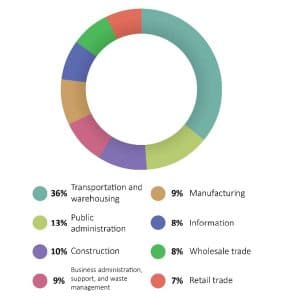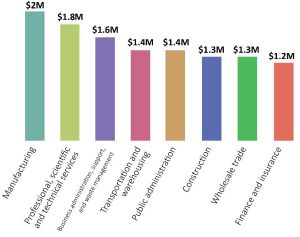
19 Apr Distracted Driving Awareness Month
Distracted Driving is dangerous and can be costly for businesses.
Did you know that April is Distracted Driving Awareness Month? The National Safety Council recognizes April as Distracted Driving Awareness Month to raise awareness about the dangers of distracted driving and encourage motorists like you to minimize potential distractions behind the wheel. While most people assume distracted driving refers to driving while texting or using a cell phone, there are actually many more activities that can be risky. Distracted Driving refers to any activity that may divert a motorist’s attention from the road. That means, you could still be distracted even without your cell phone! Whether you’re eating food, reaching for something in another seat, or simply not focusing on the road in front of you, allowing any sort of distraction to take your attention away from driving is risky.
There are three main types of distractions that can interfere with attentiveness behind the wheel, including:
Visual distractions while driving –
These distractions involve motorists taking their eyes off the road. Some examples of visual distractions include reading emails or text messages, focusing on passengers in your vehicle, looking at maps or navigation systems, and observing nearby activities. You may observe accidents as you pass, traffic stops, or roadside attractions while driving.
Manual distractions –
Such entails motorists removing their hands from the steering wheel. Key examples of manual distractions include texting, adjusting the radio, programming navigation systems, eating, or drinking. Other tasks, such as applying makeup or brushing your hair are also manual distractions.
Cognitive distractions –
These distractions stem from motorists taking their minds off driving. Primary examples of cognitive distractions include talking on the phone, conversing with passengers, or daydreaming while driving.
Regardless of the type, distracted driving is a serious safety hazard that contributes to a significant number of accidents on the road. The National Highway Safety Administration reported more than 2,800 people die each year. In addition, 400,000 people sustain injuries in crashes involving a distracted driver. That equates to approximately eight deaths and 1,095 injuries per day. Considering these findings, it’s crucial to take steps to prevent distracted driving.
Distracted Driving Losses
For businesses and organizations that rely on employees and volunteers to drive while working, this subject needs serious consideration.
According to research, people who drive for work are more likely to be in a hurry to reach their destinations. They are also more likely to think about work tasks while driving, experience fatigue or use their cellphones. Let’s take a look at some data from Advisen for a glimpse at distracted driving losses by industry.

Do you see your industry in this?
The transportation and warehousing industry accounts for the largest proportion of distracted driving losses in Advisen’s database at 36%. The public administration, construction, administration, support and waste management sectors also contain a high percentage of distracted driving losses.
Now, let’s take a look at the severity of losses by industry.

As you can see, distracted driving can be costly. To reduce distracted driving losses, employers should consider prevention measures and enforce cellphone policies and speeding procedures.
Distracted Driving Prevention Tips for Businesses
Create a distracted driving policy. Limit, or even ban, the use of handheld devices while driving on company time or in a company vehicle. Other distracting activities, such as eating, grooming, and reading, should be prohibited.
Use technology. Consider installing phone-blocking technology within vehicles. It may also be valuable to use technology that can detect and warn drivers when they may be distracted. Encourage your team to use their phone’s settings to silence notifications while driving to reduce temptation.
Communicate policies to employees. Ensure cellphone policies and other driver policies are clear and accessible. Any changes in technology used in vehicles should be communicated to employees.
Lead by example. Managers should clearly communicate the message that answering emails and texts are not as important as driving safely. Encourage managers and leadership to lead by example and set the standards.
Distracted driving is an all too frequent occurrence that poses costly risks for employers. By understanding these risks and implementing proper prevention measures, employers can help mitigate distracted driving losses and keep their employees safe on the road. For more information on creating safe driving policies, contact us today. Our team of insurance experts can help you protect your employees, drivers, and business with the proper risk management strategies.
Tips and recommendations for everyone:
Put away your phone. Silence your phone and store it in a location that won’t tempt you to pick it up while driving.
Plan your trip before you leave. Program your navigation system prior to hitting the road to get familiar with your journey so that you feel confident in your route.
Don’t fumble with your playlist. Select a radio station or plug in a predetermined playlist before driving to limit the need for music adjustments.
Secure passengers. Ensure kids are properly situated. Keep pets stationary in the back seat.
Avoid multitasking. Never complete additional tasks – such as eating or personal grooming – behind the wheel.
Stay focused. Concentrate your mind on the road by keeping distracting conversations to a minimum and looking straight ahead.


